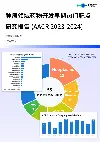Chronic exposure to lead, cadmium and arsenic increases risk of cardiovascular disease
2023-06-12
AHA会议
Around the world, most people are regularly exposed to low or moderate levels of lead, cadmium and arsenic in the environment, increasing risk of coronary artery disease, stroke and peripheral artery disease, according to a new statement.
Chronic exposure to low levels of lead, cadmium and arsenic through commonly used household items, air, water, soil and food is associated with an increased risk of cardiovascular disease, according to a new American Heart Association scientific statement published today in the Journal of the American Heart Association, an open access, peer-reviewed journal of the American Heart Association.
This scientific statement reviews evidence linking chronic exposure to low or moderate levels of three contaminant metals -- lead, cadmium and arsenic -- to cardiovascular diseases including coronary artery disease, stroke and peripheral artery disease. It highlights clinical and public health implications. Traditional risk factors for cardiovascular disease do not currently include environmental toxicants. The field of environmental cardiology identifies exposure to pollutants including contaminant metals as modifiable risks for cardiovascular disease.
"Large population studies indicate that even low-level exposure to contaminant metals is near-universal and contributes to the burden of cardiovascular disease, especially heart attacks, stroke, disease of the arteries to the legs and premature death from cardiac causes," said Gervasio A. Lamas, M.D., FAHA, chair of the statement writing group and chairman of medicine and chief of the Columbia University Division of Cardiology at Mount Sinai Medical Center in Miami Beach, Florida.
"These metals interfere with essential biological functions and affect most populations on a global scale," said vice chair of the statement writing group Ana Navas-Acien, M.D., Ph.D., a professor of environmental health sciences at Columbia University's Mailman School of Public Health and the director of the Columbia University Northern Plains Superfund Research Program in New York City. "After exposure, lead and cadmium accumulate in the body and remain in bones and organs for decades. In the U.S. alone, one large study suggested that more than 450,000 deaths annually could be attributed to lead exposure."
Where are people exposed to contaminant metals?
Exposure to contaminant metals most often occurs involuntarily, through activities of daily living. Lead may be found in a variety of items such as paint in old homes (lead paint was banned in the U.S. in 1978), tobacco products, second-hand smoke, contaminated foods (ground water and some pottery, ceramics and kitchenware are sources of lead contamination in food), water pipes, spices, cosmetics, electronics and industrial emissions. Cigarette smoking is a source of both lead and cadmium.
Cadmium is found in nickel-cadmium batteries, pigments, plastic, ceramics and glassware, and construction products. Industrially produced fertilizers use phosphate rock that is naturally rich in cadmium, which then contaminates root vegetables and leafy green plants (including tobacco).
Arsenic exposure is primarily through groundwater, which affects drinking water, soil and food grown in contaminated soil. Notably, arsenic builds up in rice more than other food crops.
While exposure and risk occur across diverse populations regardless of socioeconomic level, some people experience greater exposure to toxic metals, according to the statement. Risk of exposure is higher for people who live closer to major roadways, industrial sources and hazardous waste sites; reside in older houses; or in areas where environmental regulations are poorly enforced and responses to community complaints are inadequate.
"This is a global issue in which lower-income communities are disproportionately exposed to toxic metals through contaminated air, water and soil," said Navas-Acien. "Addressing metal exposure in these populations may provide a strategy to reduce cardiovascular disease disparities and advance environmental justice."
What are the cardiovascular risks of contaminant metals?
The scientific statement outlines global epidemiologic research confirming that lead, cadmium and arsenic are associated with premature death, due in large part to increased cardiovascular disease risk. The global research includes:
What can be done about metals in the environment?
Monitoring environmental metal levels and testing for metal in individuals are key steps to implement appropriate public health initiatives, the writing group suggests. Lead levels in children with symptoms of exposure are monitored by health professionals using blood tests. However, there are no monitoring guidelines or exposure limits established for contaminant metals in adults other than those required for specific types of work. Future research is needed to establish if such testing may be an effective strategy to identify and protect people at risk of cardiovascular disease.
The statement authors note that decreasing metal exposure in tobacco, protecting community water systems and wells, and minimizing metal contamination in air, food and soil are all examples of public health measures that may reduce exposure to metals.
"Cardiovascular health may be improved with a multi-pronged approach that recognizes environmental cardiology and includes environmental monitoring and biomonitoring of contaminant metals; controlling for sources of exposure; and developing clinical interventions that remove metals or weaken their effects on the body," said Lamas, who is also a professor of medicine at Columbia University Irving Medical Center in New York City.
While there is currently no standard medical therapy to counteract the vascular impact of contaminant metals, there is research in progress to address the potential for treating individuals for exposure. Some research is assessing the effect of chelating agents, which are medications that can remove contaminant metals, especially lead and cadmium, from the body. The chelating agent binds to metals so they can be excreted. In addition, the statement suggests research is needed to investigate nutritional supplements that may reduce the effects of contaminant metals and accelerate excretion. Supplements that have shown potential based on small trials include folate and N-acetyl cysteine.
This scientific statement was prepared by the volunteer writing group on behalf of the American Heart Association's Council on Epidemiology and Prevention; the Council on Cardiovascular and Stroke Nursing; the Council on Lifestyle and Cardiometabolic Health; the Council on Peripheral Vascular Disease; and the Council on Kidney in Cardiovascular Disease. American Heart Association scientific statements promote greater awareness about cardiovascular diseases and stroke issues and help facilitate informed health care decisions. Scientific statements outline what is currently known about a topic and what areas need additional research. While scientific statements inform the development of guidelines, they do not make treatment recommendations. American Heart Association guidelines provide the Association's official clinical practice recommendations.
The Association receives funding primarily from individuals. Foundations and corporations (including pharmaceutical, device manufacturers and other companies) also make donations and fund specific Association programs and events. The Association has strict policies to prevent these relationships from influencing the science content. Revenues from pharmaceutical and biotech companies, device manufacturers and health insurance providers, and the Association's overall financial information are available here.
更多内容,请访问原始网站
文中所述内容并不反映新药情报库及其所属公司任何意见及观点,如有版权侵扰或错误之处,请及时联系我们,我们会在24小时内配合处理。
机构
靶点
-热门报告
立即开始免费试用!
智慧芽新药情报库是智慧芽专为生命科学人士构建的基于AI的创新药情报平台,助您全方位提升您的研发与决策效率。
立即开始数据试用!
智慧芽新药库数据也通过智慧芽数据服务平台,以API或者数据包形式对外开放,助您更加充分利用智慧芽新药情报信息。





